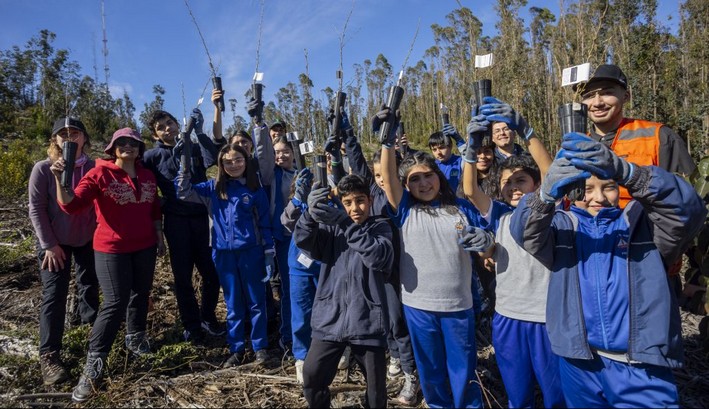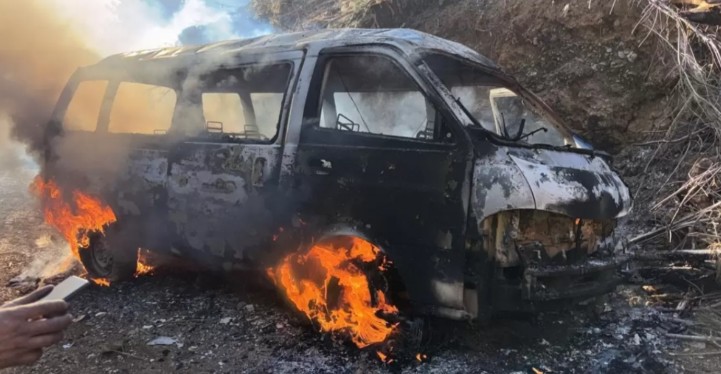Community Planting Strengthens Nothofagus Conservation and Intergenerational Legacy
The University of Concepción held a community planting event in the ex situ conservation area of the UdeC Nature Campus, an initiative that brought together retired members of the institution and students from regional schools.
The event, focused on legacy and environmental education, involved the planting of ruil (Nothofagus alessandrii), hualo (Nothofagus glauca), and Santiago oak (Nothofagus macrocarpa)—native species of high ecological value and varying levels of threat.
Living Legacy and the UdeC Community
The first part of the event gathered retired UdeC staff, reinforcing their connection to the university and creating a symbol of belonging in the territory.
"Today, we carried out an activity of profound symbolic value for the University of Concepción. Each person concluding their journey at our institution has planted a threatened Nothofagus specimen—ruil, Santiago oak, or hualo—leaving a living legacy on these grounds. These trees will become part of the botanical garden we are building at the UdeC Nature Campus and will stand as a lasting testament to their contribution to our community," said its director, Cristian Echeverría Leal.
"Undoubtedly, people hold a key place in this project, and the ceremony we are conducting is highly meaningful because we are developing an initiative that also supports retirees during their post-work phase. Today, we invited them to explore the Nature Campus and plant their seed, their tree, in this space so significant for the university’s future," stated Dr. Miguel Quiroga Suazo, Vice President of Economic and Administrative Affairs at UdeC.
Similarly, UdeC Director of Human Resources, Cecilia Saavedra Valenzuela, emphasized the sense of community: "Through this symbol, this planting, we aim to reflect the kind of community we aspire to have—with students, current workers, and now also with retirees. We want to maintain this bond, and planting this small tree is, of course, a symbol of that."
Retirees particularly valued the closeness of the gathering: "I think this is an excellent, very heartfelt activity, closely aligned with what we seek after finishing our active work and maintaining ties with the university. This mark of connecting with nature and leaving a footprint on the university’s campus land is a wonderful idea," commented Marta Ruiz Peyrin, a former academic at the Faculty of Dentistry.
Voices from Schools and the Territory
The experience included children and teachers from nearby schools, reinforcing hands-on learning and appreciation for native flora. Teacher Lina Uribe Arancibia from Colegio El Refugio thanked the learning opportunity for students, adding, "It’s a great, transcendent experience because they will be able to return as adults and observe their little trees."
Students also highlighted benefits for wildlife: "I liked the activity mainly to come and plant, and so when the trees grow, birds will have a new habitat," said Lucas Cid from the same school. Meanwhile, Francisco Castro from Colegio Juan Gregorio Las Heras emphasized practical learning: "The activity was really fun. It was exciting not just to study plant science but also to plant and truly interact with nature."
Ex Situ Conservation: Why Nothofagus?
The community planting was part of the UdeC Nature Campus’s ex situ conservation efforts, which aim to safeguard the genetic diversity of key native species.
It is important to note that 37 species, distributed across 7 countries in the Southern Hemisphere, make up the Nothofagus genus. The IUCN Red List reveals that ruil, hualo, and Santiago oak are threatened and endemic to Chile—meaning they exist only in our country.
They are also considered vital for the health of central Chile’s Mediterranean forests, providing habitat for wildlife and contributing to landscape resilience.
Next week, outstanding UdeC students will join the effort, continuing the planting and care of the specimens, expanding the reach of this intergenerational initiative that unites the university and school communities around nature, sustainability, and legacy.

















